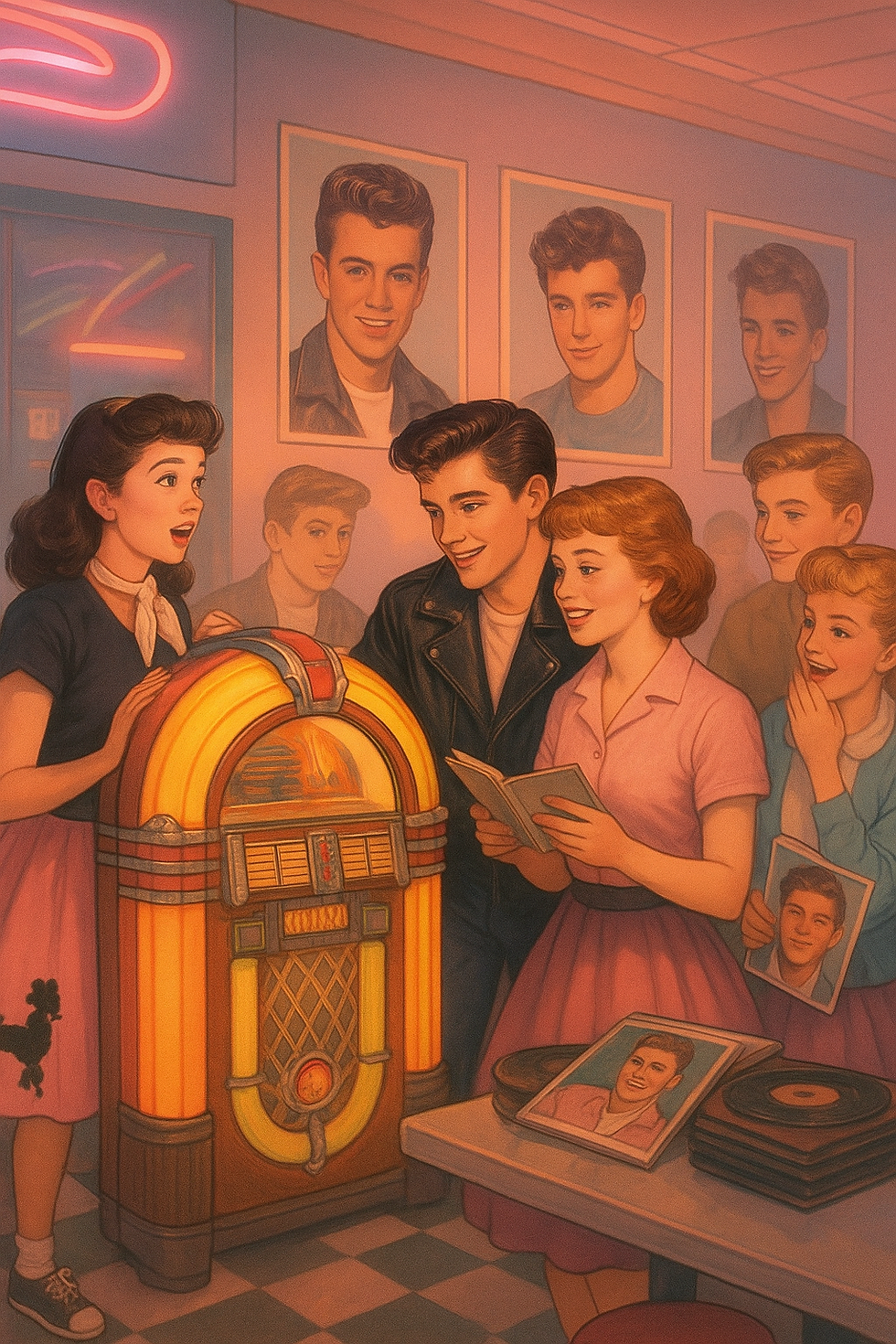
Photo- AI Generated
Teen Idols and Heartthrobs: Pop Music Icons of the 1950s
Discover 1950s teen idols and heartthrobs, including Elvis Presley, Pat Boone, and Ricky Nelson, who influenced culture and pop music.
17 August 2025
The 1950s were a watershed moment in popular music. As rock 'n' roll exploded onto the scene, a new cultural phenomenon emerged: the teenage idol. These were youthful, attractive vocalists who won the hearts of America's youth while also influencing the early identity of pop music. For the first time in history, teenagers had their music icons, people they adored not only for their vocals, but also for their style, charm, and mainstream appeal.
The rise of teen idols coincided with the postwar boom, when television, films, and radio expanded their audience. Young audiences, anxious for freedom from their parents' traditions, gravitated towards stars who spoke directly to their ambitions, dreams, and disappointments.
Elvis Presley, The King of Heartthrobs.
No discussion about 1950s teen idols would be complete without including Elvis Presley. Elvis Presley, sometimes known as the "King of Rock 'n' Roll," was not only a musical pioneer but also a cultural icon. Elvis' slicked-back hair, daring hip shakes, and smouldering voice sent shockwaves through conservative America, inspiring a generation of devotees. Songs like "Heartbreak Hotel" and "Don't Be Cruel" cemented him as the ultimate heartthrob, combining sex appeal with raw skill.
Elvis embodied rebellion, independence, and youthful vigour, attributes that connected well with youths while scaring older generations. His enormous popularity solidified the adolescent idol's role as a strong cultural influencer.
Ricky Nelson: The Boy-Next-Door Icon
While Elvis embodied danger and rebellion, Ricky Nelson offered a softer, more wholesome image. Nelson first gained fame as part of The Adventures of Ozzie and Harriet, where he played himself in a television family. His on-screen charm translated into a successful singing career, with hits like “Poor Little Fool” and “Hello Mary Lou.”
Ricky’s appeal lay in his boy-next-door looks and relatable image. He reassured parents while still connecting with young fans, proving that teen idols could thrive across different personalities—from edgy to clean-cut.
Pat Boone & the Safe Pop Idol
Pat Boone, another big heartthrob of the 1950s, went on to become one of the era's most successful music artists. With his soft voice, clean-cut demeanour, and gospel influences, Boone provided a more conservative alternative to rock's wild side. He frequently covered rhythm and blues songs, making them more popular among mainstream white audiences at the time.
Although his style was criticised for sanitising Black music, Boone's popularity highlighted the contrast between "safe" youthful idols and others like Elvis, who broke social boundaries. Together, they defined the range of 1950s pop stardom.
Female heartthrobs and pop icons
While male teen idols dominated headlines in the 1950s, female stars rose to prominence as icons for both young men and women. Connie Francis, with emotional ballads like "Who's Sorry Now," was one of the first female pop idols to attain international success. Her success demonstrated that teen idol status was not limited to men but instead was about charisma, relatability, and the ability to elicit youthful emotion.
1950s Teen Idols: Their Legacy
The teen idols of the 1950s paved the way for everything that followed in pop music. They established the concept of celebrity worship among youths, influencing fashion, attitudes, and even parental fears. The formula created during this era was presenting attractive young performers with catchy songs and mass media backing, which can still be found in subsequent generations, from 1990s boy bands to today's K-pop artists.
The 1950s demonstrated that music could be more than just a sound; it could be a way of life, a form of revolt, or an identity. Teen idols were more than just singers; they were representations of youth itself.
Conclusion
Teen idols and heartthrobs of the 1950s like Elvis Presley, Ricky Nelson, Pat Boone, Connie Francis, and others were pioneers who defined the concept of teenage celebrity, providing young audiences with cultural heroes for the first time. Their impact is still felt in today's music scene, where image and charm are as important as the songs themselves.









